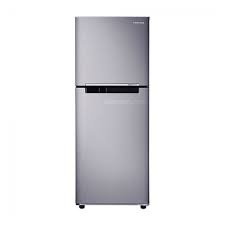Welcome to another detailed guide from TheKitchenApplianceDad.com. Today, we’re tackling a common issue that many homeowners face at some point: resetting the temperature on a Samsung refrigerator. Whether your fridge is chilling your milk a bit too enthusiastically, or it’s not keeping the veggies crisp enough, getting the temperature right is crucial for both food safety and energy efficiency.
Before we dive into the steps of resetting your fridge temperature, it’s important to understand why maintaining the correct temperature in your refrigerator is crucial. The USDA recommends keeping your refrigerator at or below 40°F (4°C) and your freezer at 0°F (-18°C) to keep your food safe from bacterial growth and spoilage.

Samsung offers a variety of refrigerator models, each with slightly different settings and controls. Identifying your model is the first step in properly resetting its temperature. You can usually find the model number on a label inside the fridge, near the top on either side, or behind the vegetable crisper.
Most Samsung refrigerators have their temperature settings on a digital control panel. In newer models, this panel is typically located on the front door, easily accessible without opening the fridge.
The control panel on a Samsung fridge typically includes a few essential buttons like:
To reset the temperature:
After resetting, allow your refrigerator around 24 hours to stabilize at the new temperature. You can check the internal temperature using an appliance thermometer.
It’s a good practice to occasionally check the actual temperature inside your fridge and freezer with an appliance thermometer. This helps ensure that the settings on the control panel match the actual environmental conditions inside the unit.
Sometimes, even after resetting the temperature, you might find that your Samsung fridge isn’t operating as expected. Here are a few troubleshooting tips:
If your fridge continues to have issues after checking these elements, it might be time to consult the Samsung support center or contact a professional technician.
Resetting the temperature on your Samsung fridge is an easy process that can lead to better performance and more efficient cooling. Just follow the steps outlined above to ensure your appliance is running optimally.
By maintaining the correct temperature, not only do you extend the lifespan of your Samsung fridge, but you also ensure that your food is stored safely and efficiently. For more tips and appliance advice, keep visiting us here at TheKitchenApplianceDad.com.

